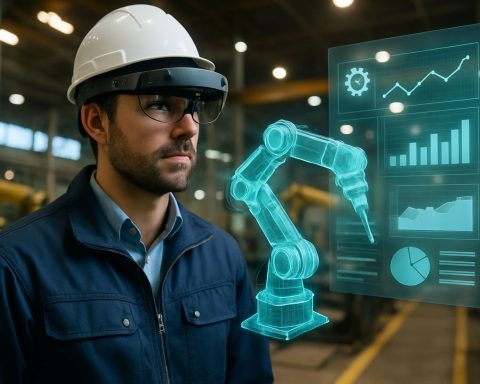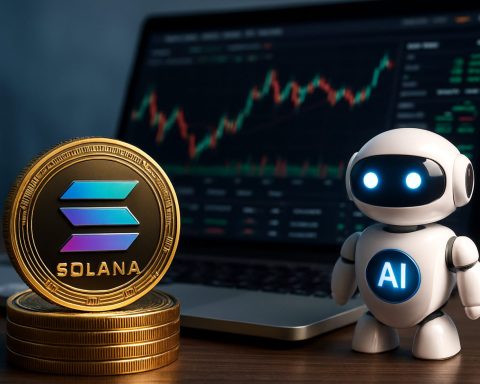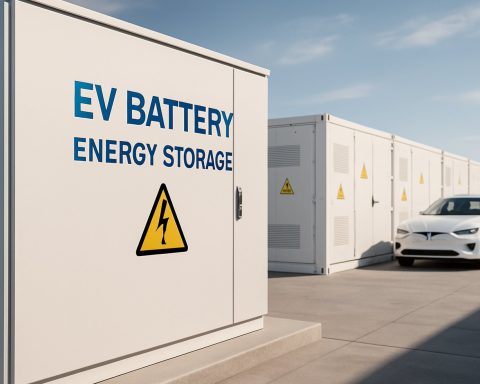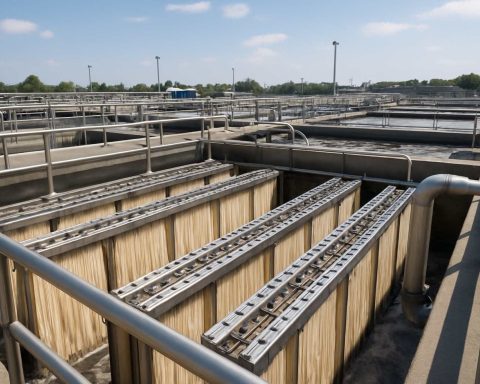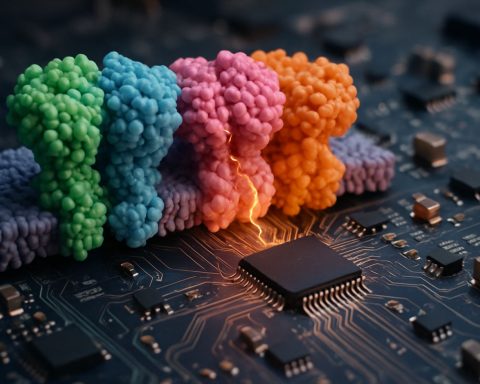- TerraPower and Sabey Data Centers plan to use advanced nuclear reactors to address tech facilities’ growing energy needs.
- Small Modular Reactors (SMRs) offer compact, efficient nuclear power with molten salt technology for seamless energy storage.
- SMRs are poised to energize data centers in high-demand regions like Texas and the Rocky Mountains.
- Nuclear power adoption could boost job markets by creating demand for skilled engineers and construction professionals.
- TerraPower is tackling regulatory and safety skepticism with innovative waste solutions and reactor designs.
- If successful, this partnership could establish nuclear energy as a pivotal component in sustainable global development.
In a visionary leap, Bill Gates’ TerraPower has joined forces with Sabey Data Centers, aiming to harness the power of cutting-edge advanced nuclear reactors to meet the growing energy needs of tech facilities. As artificial intelligence and digital infrastructure skyrocket, this partnership could signal a groundbreaking shift towards sustainable and reliable energy solutions, merging innovation with environmental responsibility.
At the heart of this transformation are Small Modular Reactors (SMRs)—a testament to TerraPower’s commitment to efficiency and safety. Unlike their larger predecessors, these reactors are compact yet mighty, sporting revolutionary features like molten salt technology for seamless energy storage, allowing effortless integration with renewable resources. Specifically designed for data centers, especially in energy-hungry regions like Texas and the Rocky Mountains, SMRs promise to redefine how tech facilities harness power.
The potential impact of nuclear power extends beyond energy efficiency; it marks an economic turning point. Deploying SMRs can invigorate job markets, driving demand for skilled engineers and construction professionals. This stable energy source also provides tech companies the confidence to explore emerging markets, reducing dependency on volatile fossil fuel markets and bolstering global energy security.
Nevertheless, embracing nuclear innovation is not without challenges. Regulatory hurdles and public skepticism regarding safety remain significant barriers. However, TerraPower’s focus on secure waste solutions and innovative designs could shift public perception, paving the way for broader adoption. If successful, this alliance could set a precedent for a clean energy shift on a global scale, positioning nuclear technology as a cornerstone of future sustainable development.
As the world pivots towards reducing carbon footprints, TerraPower’s reactors may play a pivotal role in realizing a greener and more resilient future. This bold initiative suggests that nuclear energy could be the tech industry’s answer to its power conundrum, heralding a new era of sustainability.
Will Nuclear Reactors Power the Future of Tech? TerraPower’s Bold Partnership Could Change Everything
What are the advantages of using Small Modular Reactors (SMRs) for data centers?
Pros of SMRs:
1. Efficiency and Compact Design:
– SMRs are designed to be highly efficient in generating power despite their smaller size. Their compact design makes them suitable for deployment in space-constrained areas, such as urban tech hubs.
2. Modularity and Scalability:
– These reactors can be built to scale, allowing incremental additions as energy demands grow, offering flexibility and reduced upfront capital investments.
3. Environmental Responsibility:
– Employing molten salt technology for seamless energy storage, SMRs integrate effortlessly with renewable energy sources, dramatically reducing the carbon footprint compared to traditional power generation methods.
What regulatory challenges do SMRs face, and how can they be mitigated?
Challenges and Mitigation:
1. Public Perception and Safety Concerns:
– One of the major hurdles is public skepticism stemming from historical nuclear disasters. TerraPower aims to shift these perceptions by focusing on secure waste solutions and innovative reactor designs.
2. Regulatory Barriers:
– Obtaining licenses and meeting stringent safety regulations can delay the deployment. Active collaboration with regulatory bodies to streamline processes and adherence to safety standards can accelerate approval.
3. Waste Management:
– Addressing long-term waste disposal is critical for public acceptance. TerraPower is working on secure and innovative waste management strategies to demonstrate their commitment to sustainability.
How might the integration of SMRs transform the tech industry’s approach to energy needs?
Transformation of Energy Needs:
1. Stability and Reliability:
– SMRs provide a stable energy source, essential for data centers that require consistent power to manage operations. This reliability reduces dependency on fossil fuels, offering resilience against fuel market fluctuations.
2. Economic Impact:
– Building and maintaining SMR facilities is expected to create jobs, from engineering to construction, and stimulate local economies, particularly in tech-centric regions.
3. Facilitating Innovation:
– By securing a reliable and clean energy source, tech companies can invest more resources into exploring emerging markets and new technologies, further driving innovation.
For further insights into TerraPower and the future of nuclear energy, visit TerraPower.
Further Reading
In conclusion, TerraPower’s partnership with Sabey Data Centers to utilize SMRs for data center energy solutions represents a significant step towards sustainable tech innovation. By leveraging advanced reactor designs, TerraPower aims to address the energy-intensive demands of modern digital infrastructure while promoting a more environmentally responsible path forward.

